Madikwe Game Reserve and Marataba Safari Lodge: a safari playground in South Africa
Two very different safari spots offer an unforgettable journey into the South African wild
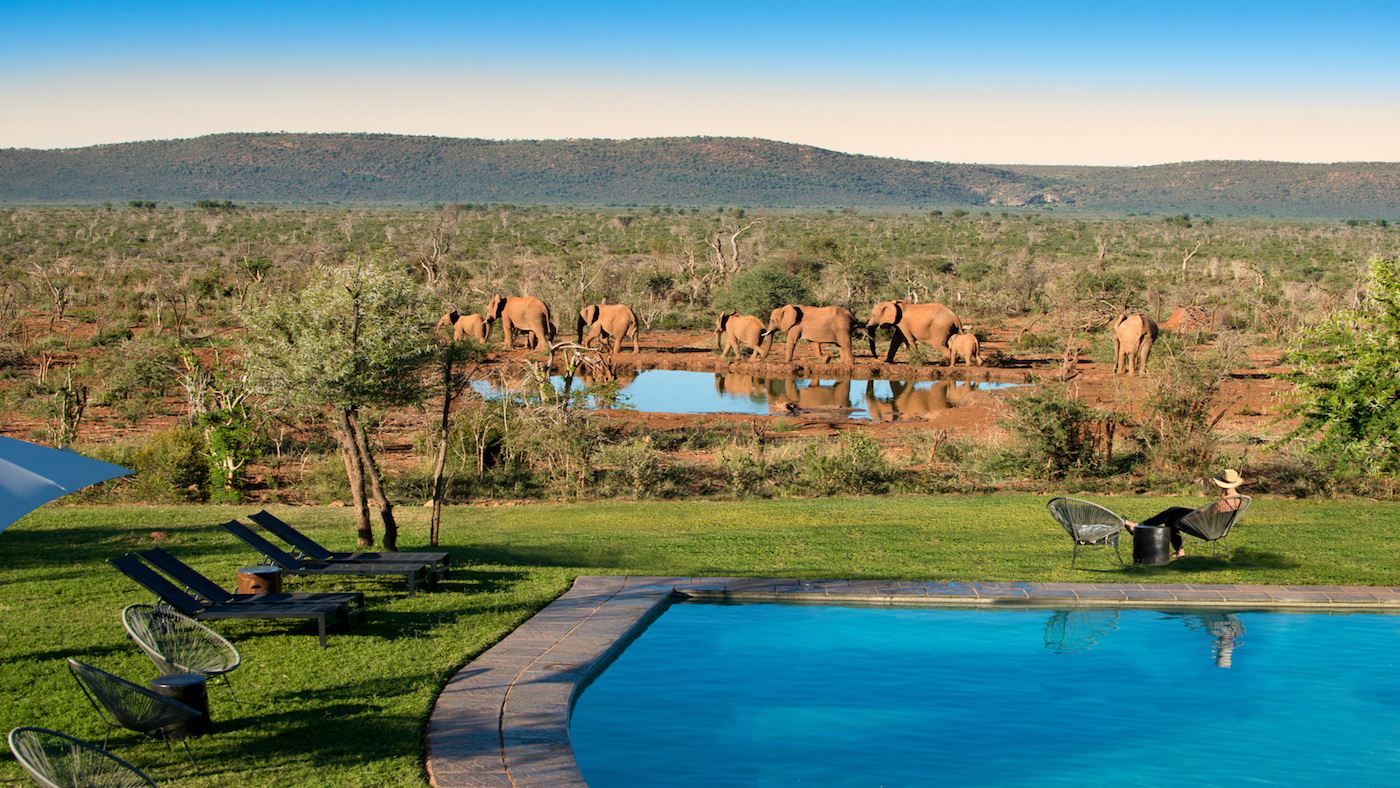
As a family of three, we tend to stick together when it comes to holidaying abroad, but as my wife was busy this half term, I decided to surprise my daughter with a special trip for two. Initially, I had my sights set on a simple Mediterranean beach holiday or a scenic city break, but the more I thought about our adventure, the more I got carried away.
And then I supersized it: it had to be a safari - ‘Why?’ asked my wife. The answer was easy: here was an opportunity to embark on A Great Adventure together; somewhere new and exciting, where I could embrace my ‘inner Attenborough’ and ‘action dad’ tendencies before my daughter Lily relegates me to the ‘Uncool’. With this in mind, and given Lily’s love of animals, we decided to embark on the (lion) king of half- term breaks, settling on a double-destination safari in South Africa.
Our ‘expedition’ was split between Madikwe Game Reserve, which borders Botswana and is widely considered one of South Africa’s largest and most exclusive reserves, and Marataba Safari Lodge, which offers dramatic views of the Waterberg mountain range in the country’s Limpopo Province. Both are private Big Five game reserves - named for the five animals considered most dangerous to stalk: elephant, buffalo, lion, leopard and rhino - but that’s where the similarities end.
The Week
Escape your echo chamber. Get the facts behind the news, plus analysis from multiple perspectives.

Sign up for The Week's Free Newsletters
From our morning news briefing to a weekly Good News Newsletter, get the best of The Week delivered directly to your inbox.
From our morning news briefing to a weekly Good News Newsletter, get the best of The Week delivered directly to your inbox.
Madikwe Game Reserve is a semi-arid region noted for its grasslands, savannahs and scorched desert terrain, while Marataba Safari Lodge, set in the Marakele National Park, is framed by rust-coloured mountains and wooded hills that give way to dense bushveld; two very different habitats that are roamed by an astonishing assortment of large and small game.
Madikwe Game Reserve is a 40-minute flight from Johannesburg and to get there, Lily and I travel on a four-seater Cessna 172 Skyhawk, which heightens our sense of anticipation and gives me my first ‘action dad’ buzz: the same light aircraft feature in numerous James Bond movies.
A model of successful conservation, Madikwe was established in 1991 when the land was reclaimed from struggling cattle farms. Over a period of seven years, more than 8,000 animals were reintroduced to the territory in a re-wilding effort, Operation Phoenix, which remains the world’s largest wildlife translocation project.
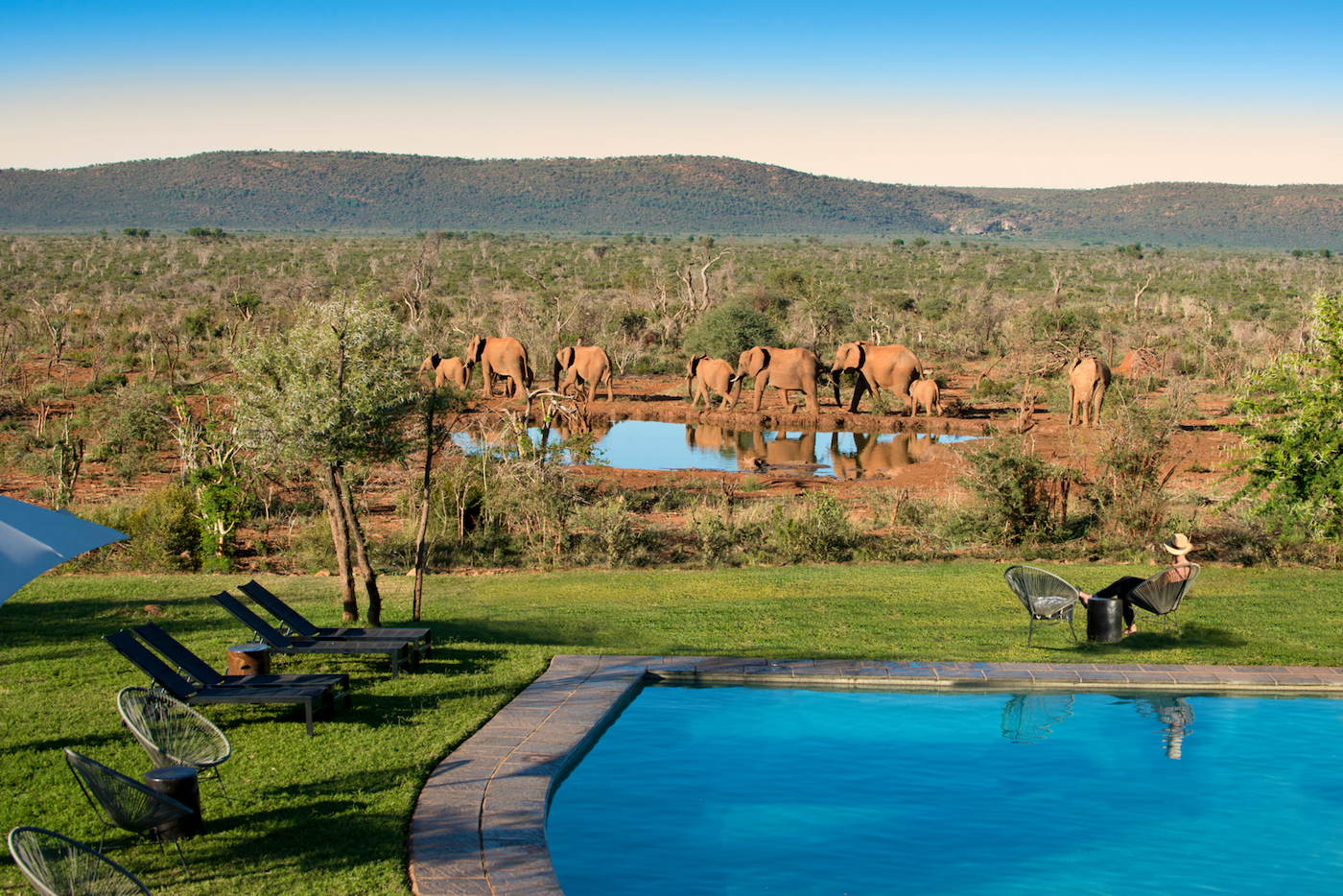
Spanning 750 km2 of bushland, the reserve is home to not only the Big Five but also by dozens of other large mammals, including the impala, springbok, oryx and kudu, a type of spiral-horned antelope. The area’s proximity to the Kalahari also means the unusual presence of desert-adapted species such as the brown hyena, bat-eared fox and the endangered African wild dog. This is a paradise for ornithologists, too: there are 350 species of bird, including many interesting raptors and flamboyant varieties such as the plum- coloured starling, orange-faced secretarybird and the southern yellow-billed hornbill, affectionately known as the ‘Flying Banana’ and immortalised as Zazu in The Lion King.
A free daily email with the biggest news stories of the day – and the best features from TheWeek.com
When we land, we are greeted by our field guide, Jean-Pierre Appelgren (or ‘JP’ as he prefers to be called), a burly ex-military man with a sunny disposition, whose dedication to his job goes above and beyond the call of duty to ensure visitors enjoy an unforgettable experience. “Welcome to my office!” he exclaims with open arms, and he’s not kidding either: JP is also an honorary officer of the counter-poaching unit and spends much of his free time patrolling the park.
Botswana has just lifted its ban on elephant hunting, so conservation groups have an even greater role to play in the protection of these majestic creatures. A recent census put the number of elephants at Madikwe at more than 900 (although I am told by one guide that there are as many as 1,500), and their population density at the reserve is higher than in any other protected area in South Africa, equating to around 43% of the terrain’s herbivore biomass.
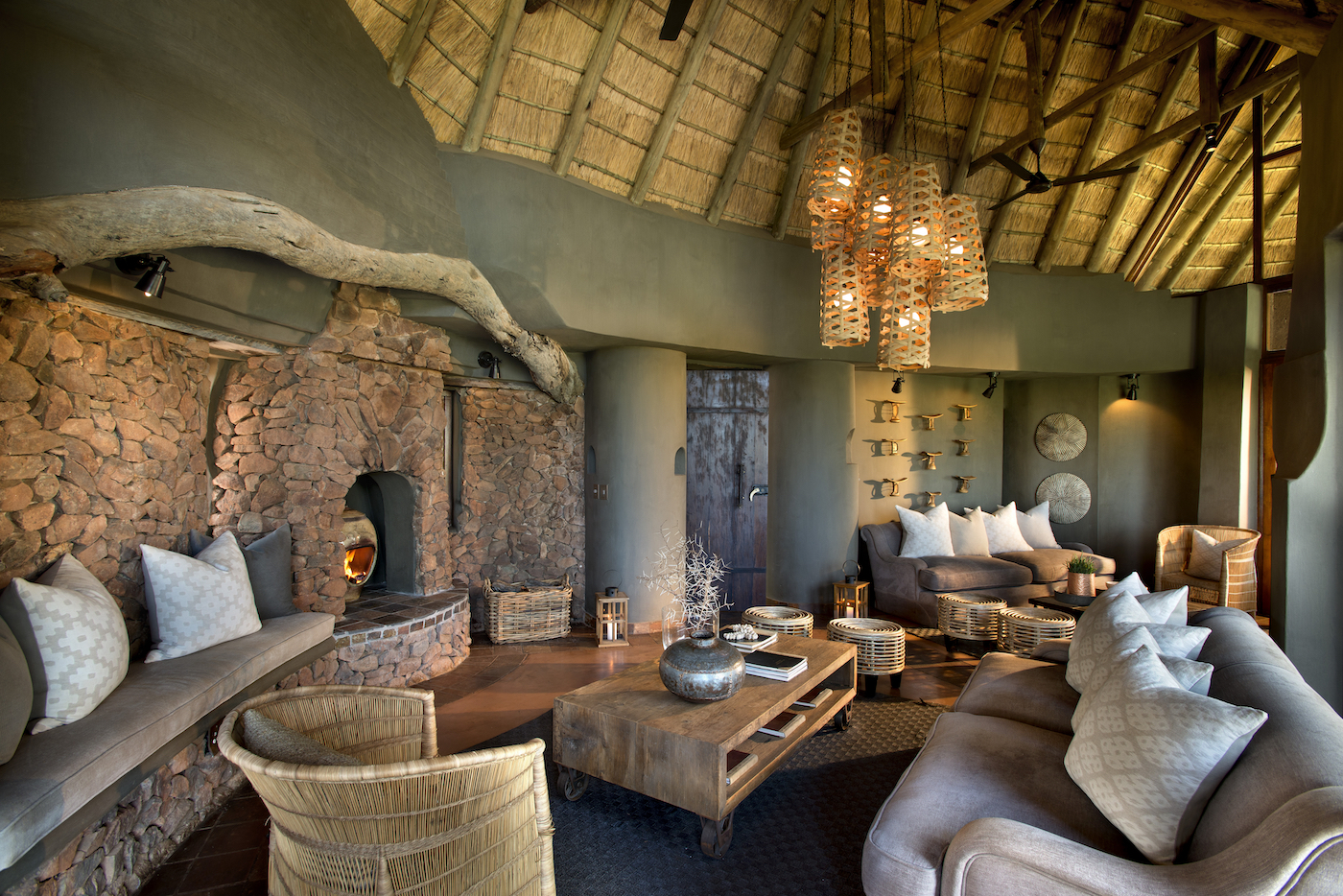
A ten-minute ride in JP’s trusty Land Cruiser is all the time it takes to arrive at the luxury safari lodges in the heart of the reserve. We are staying at the Madikwe Lelapa Lodge (the word lelapa means ‘family’ in Tswana), which is perched on a hillside and comprises 12 stylish suites. A classic timber-and-stone building with high thatched ceilings and twisted tree trunks that serve as pillars, the lodge fuses rustic flourishes with just enough colonial luxe: in the lounge area, comfortable cream sofas are complemented by carved wooden coffee tables, African artworks, dramatic chandeliers, and an open fireplace that is lit in the evening when the temperature drops, while a sprawling deck offers vistas of the wide-open wilderness.
Our room is huge and decorated in soft earthy tones. Like all of the suites, it comes with its own plunge pool, as well as a raised deck from which to observe the animals as they drink from a strategically dug-out watering hole next to the lodge. Our first glimpse of thirsty visitors is a herd or ‘dazzle’ of zebras, a fitting term since nothing quite prepares you for the first time you see wild beasts in their natural habitat. Madikwe is one of the few places on earth where you can put so many of these creative collective terms to practical use – including a ‘bloat’ of hippos and a ‘gulp’ of cormorants.
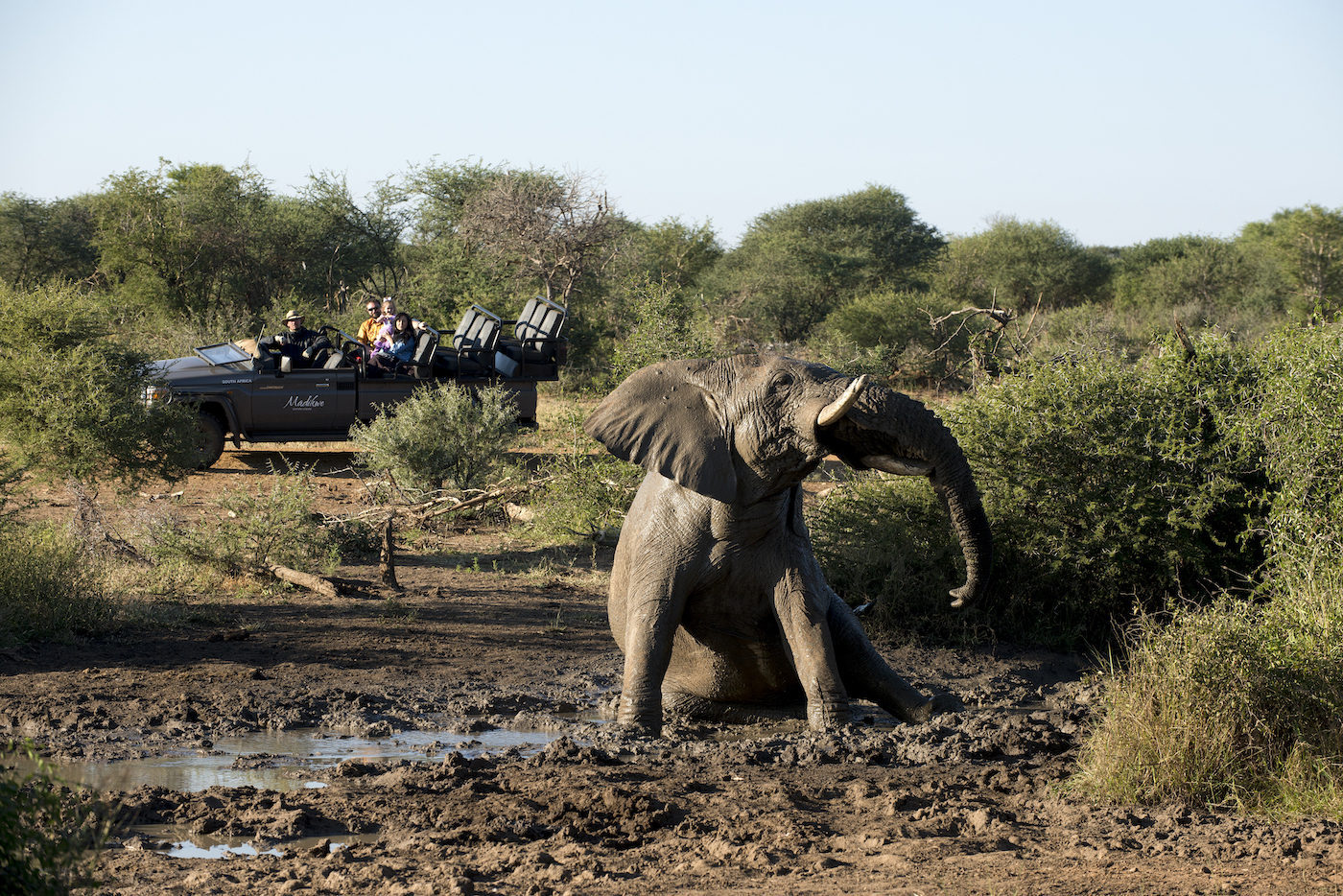
During our first drive with JP, we spot a herd - or ‘crash’ - of rhinoceroses, which we’re able to admire at close range since they have notoriously bad eyesight. JP won’t divulge how many rhinos inhabit the park, due to the severe poaching problem: on the black market, rhino horn can fetch as much as $80,000 per kilo, making it one of the world’s most expensive materials.
The poet Tennyson is credited with having described nature as “red in tooth and claw” and this reference to the sometimes cruel reality of the natural world manifests itself on day three when we witness a lone hyena tearing at the carcass of a giraffe. We are transfixed by this rather brutal feeding frenzy, which I’d like to think taps into something deeply embedded within our psyche: the binding connection, perhaps, between man and beast that speaks of our great will to survive.
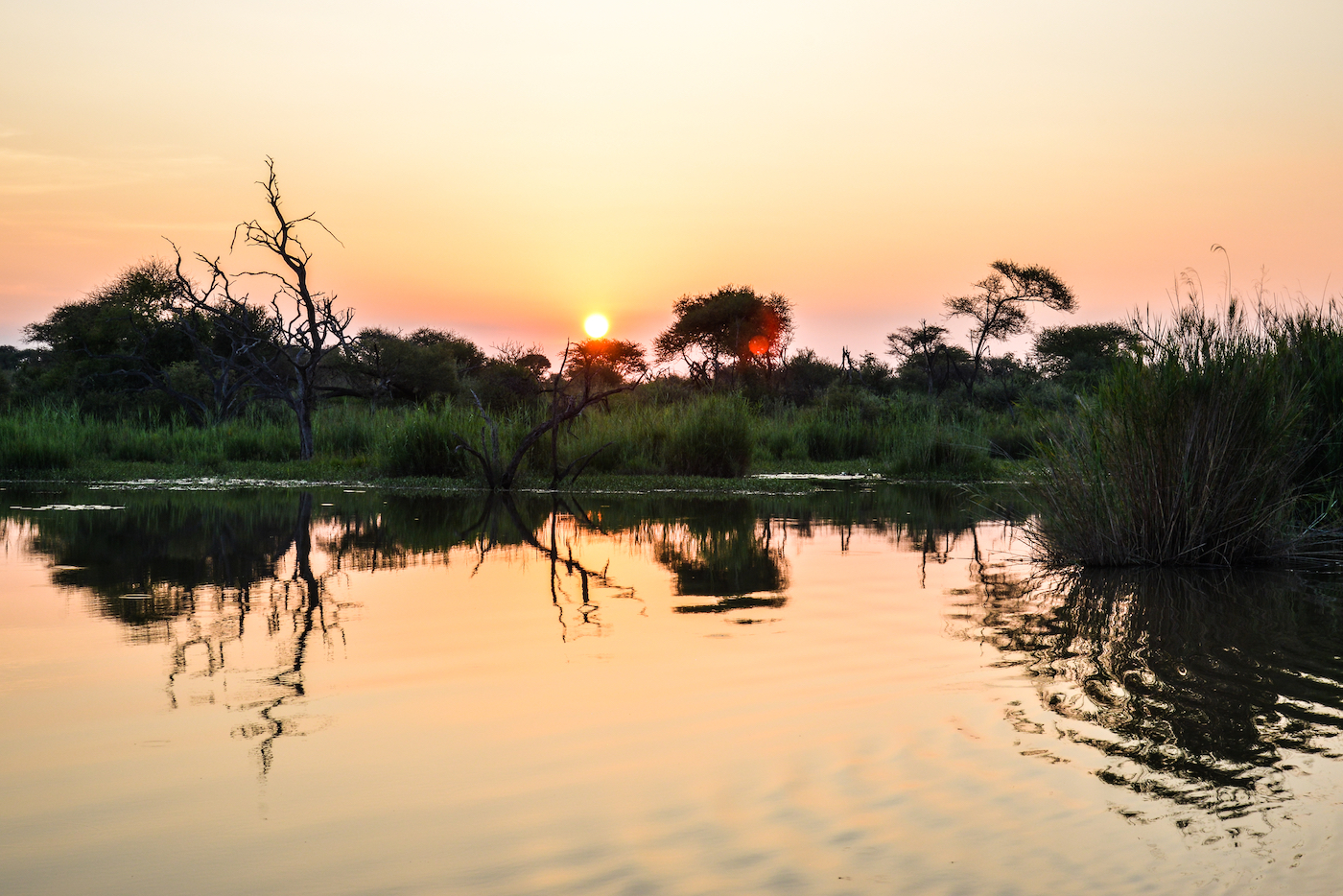
Over the next few days, we come to appreciate the sheer density of Madikwe’s wildlife population: we see a large herd of female impalas marshalled by a single noble-looking male; two cheetahs feeding on a zebra foal; a lioness lolloping in the heat of the midday sun; giant wildebeest; kudu; innumerable giraffes, and, much to Lily’s delight, a warthog (he sang Hakuna Matata, remember?) accompanied by a chorus of adorable piglets.
Conservation efforts at the game reserve are multifaceted, with many programmes tailored to the protection of endangered species including the indigenous white and black rhino as well as the African wild dog, also known as the ‘painted dog’ on account of its mottled brown-black fur. This predatory canine remains one of the most endangered animals in Africa, with fewer than 7,000 dogs left across the entire continent.
One of the biggest developments on the cards is the ‘Heritage Park’ conservation corridor that will join Madikwe Game Reserve and Pilanesberg National Park near Sun City, allowing for a greater migration space for animals. The proposed 20-year initiative will link Botswana with Limpopo Province, creating even more scope for eco-tourism.
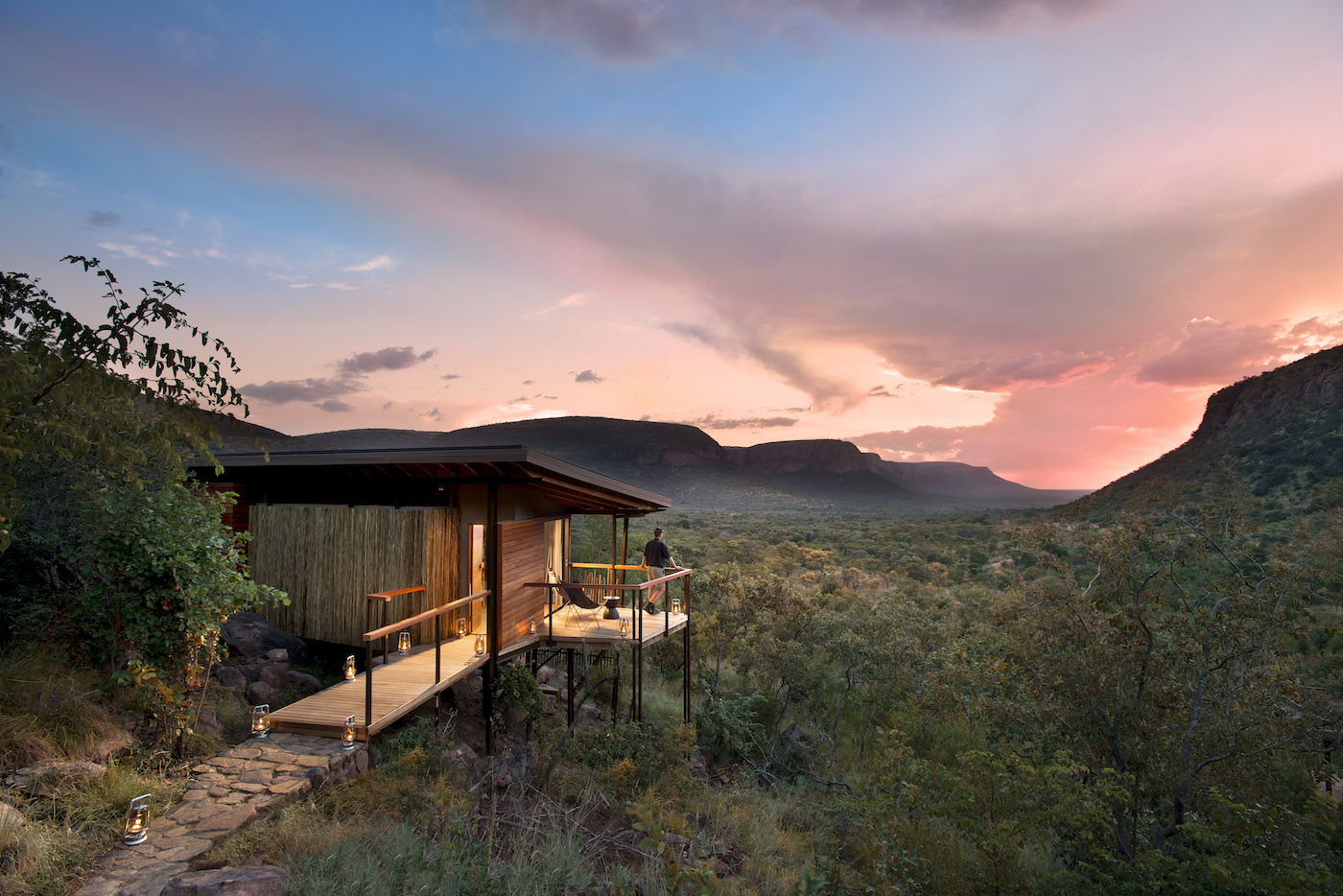
North of Pilanesberg and east of Madikwe is the relatively small and rugged Marakele National Park – where the second leg of our safari begins. Nestled in a valley at the southern end of Limpopo, with winding rivers that cut through the landscape, Marakele sits at the foothills of the magnificent Waterberg mountain range noted for its golden sandstone cliffs that redden during sunrise and sunset.
Marataba, the only accommodation on this 250km2 patch of protected land, is the safari version of glamping: stylishly decorated stone-and-canvas tents open up to glorious views of the park’s cinematic landscape.This is a chance to sleep under the stars – albeit in the lap of luxury – and as we soon discover, soundtracking our dreams to the lulling sounds of the African night is really beyond compare. A
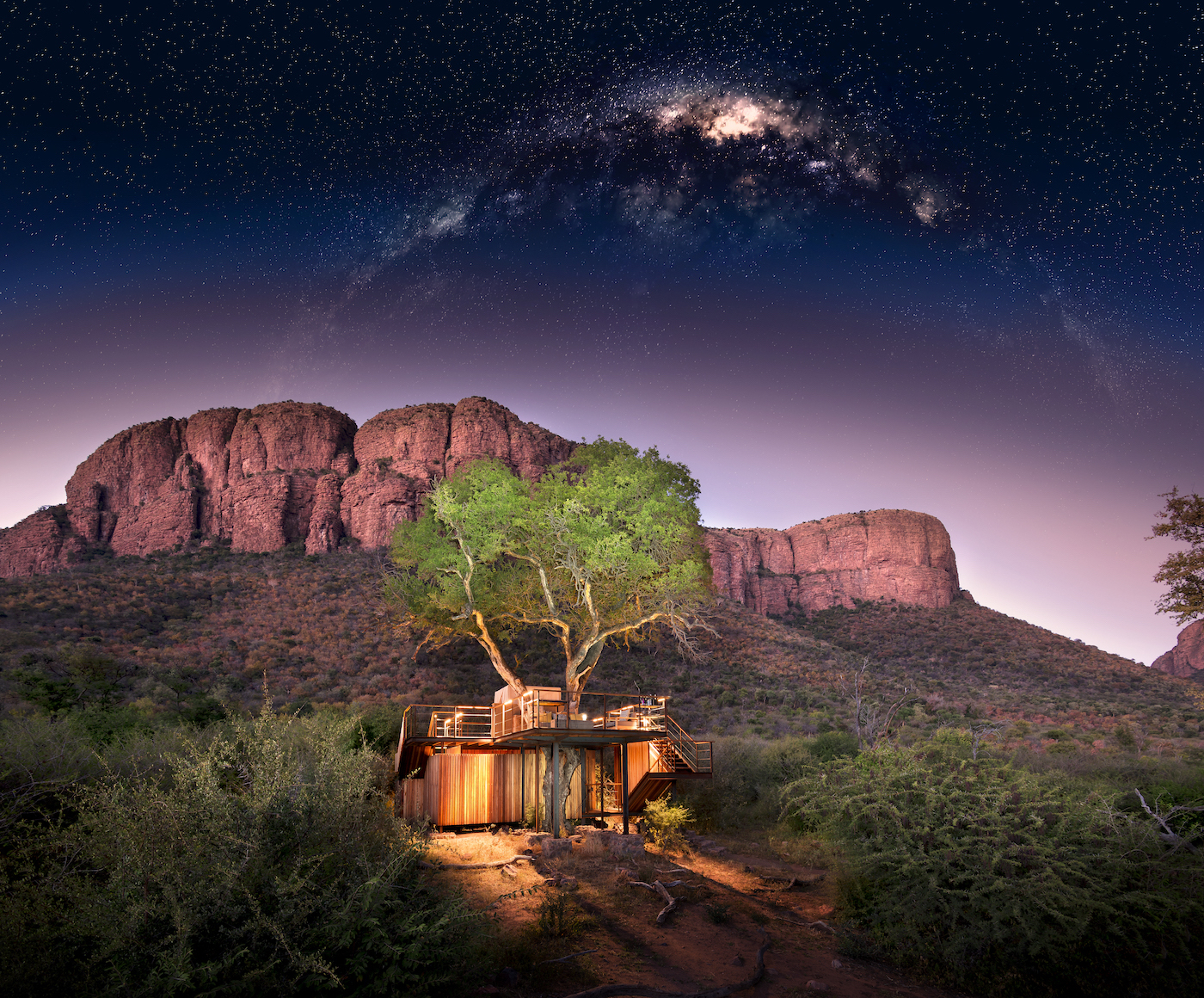
Another Big Five area, Marataba has a sizeable lion population, but the reserve also offers some of the best white and black rhino viewing in the world. On an early Jeep tour, we catch a glimpse of one of these mystical and elusive animals – only things don’t quite go to plan when the black rhino bull in question suddenly gets spooked and begins to charge in our direction. There’s no danger as we are immediately whizzed to safety thanks to our guide, Mo, an expert driver with a superhuman auditory range (he can pick up on the softest snap of a twig from dozens of metres away). The rhino, he explains, had been feeding behind some trees and was worried we were muscling in on his snack time – which, if you think about it, is a pretty legit reason to lose your cool.
Sound effects are more sonorous along the river banks thanks to a plethora of rare birds including the bearded woodpecker (the male is distinguished by its punk-like red crown); the blue-green Burchell’s starling, named after 19th-century English explorer William John Burchell; the bee-eater, which boasts an iridescent mix of green and yellow feathers, and the beguiling black crake, whose chirpy song sounds uncannily like R2-D2.
What makes Marataba so magical for families is the never-ending supply of ‘wow’ moments. Nothing tops the water safari aboard the Miss Mara, a caged-in pontoon that operates both sunset and morning cruises along the Matlabas River, from which you can spot deceptively cute hippos grunting and fanning their tails in the water as you sip on hot cocoa or a chilled sundowner.
For us, the new Thabametsi Treehouse was a high point, if not a superlunary experience. Built on a raised deck, this luxury solar-powered hideout is set on two levels and is located a short drive from the main lodge. Here, at one with nature, you feel swathed in the irresistible might of the African landscape, its earth, its animals and its sweeping sky suffused with light. And when the sun goes down, you get to sleep beneath an inky blue canopy punctured by a vast sheet of stars. Quality time with Dad doesn’t get much better than this, and even Lily wouldn’t think me uncool for saying it.
-
 Trump vows naval blockade of most Venezuelan oil
Trump vows naval blockade of most Venezuelan oilSpeed Read The announcement further escalates pressure on President Nicolás Maduro
-
 Political cartoons for December 17
Political cartoons for December 17Cartoons Wednesday's political cartoons include healthcare costs, the affordability hoax, giving up pencils, and more
-
 Trump vs. BBC: what’s at stake?
Trump vs. BBC: what’s at stake?The Explainer The US president has filed a $10 billion lawsuit over the editing of Panorama documentary, with the broadcaster vowing to defend itself
-
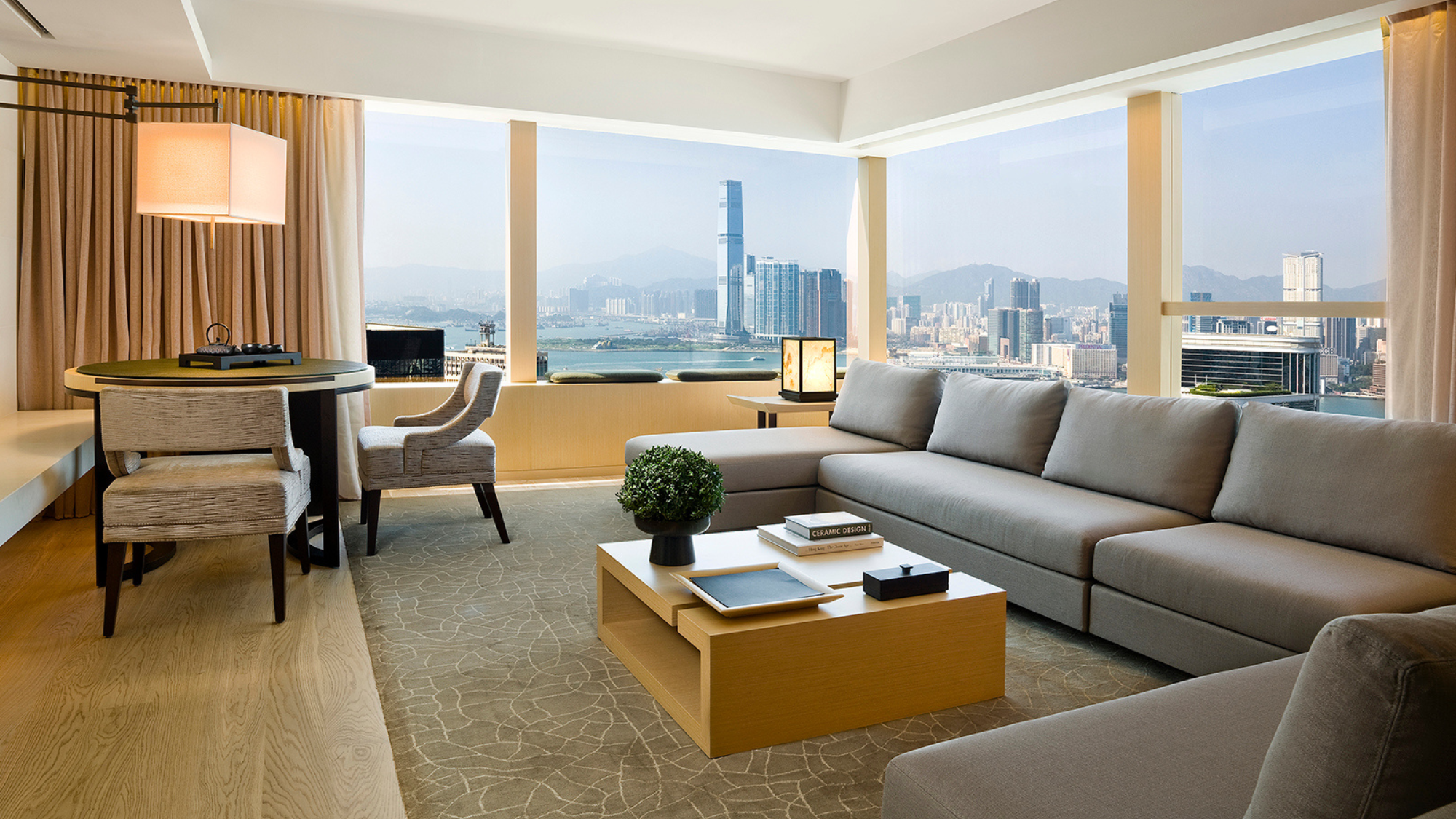 Upper House Hong Kong: a serene sanctuary in the bustle of the city
Upper House Hong Kong: a serene sanctuary in the bustle of the cityThe Week Recommends Panoramic harbour views and super-stylish interiors elevate this luxury hotel to another level
-
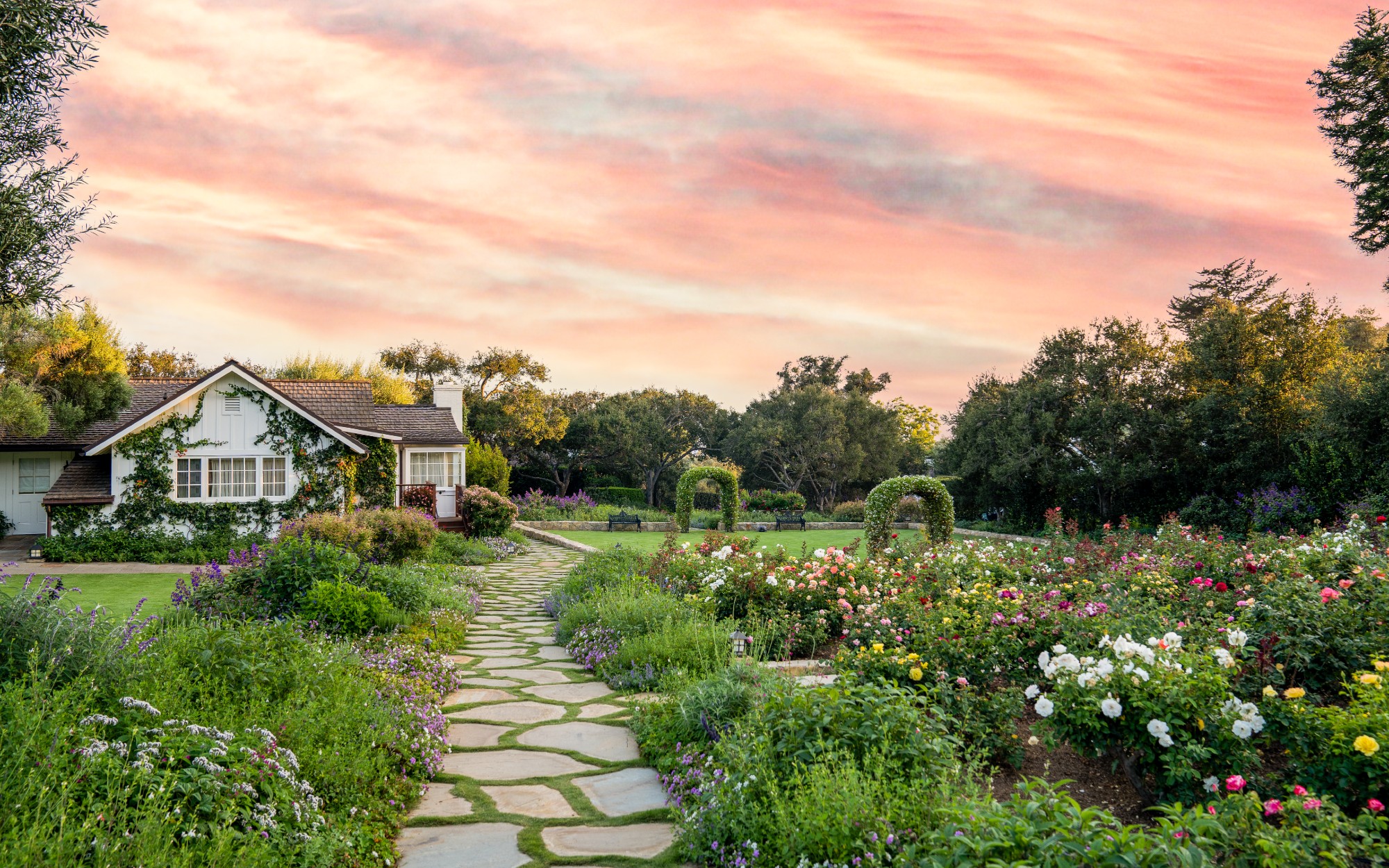 Step into a fairy tale at San Ysidro Ranch
Step into a fairy tale at San Ysidro RanchThe Week Recommends This historic Californian hideaway is pure magic
-
 The Old Bell Hotel: whimsy and charm in historic Wiltshire
The Old Bell Hotel: whimsy and charm in historic WiltshireThe Week Recommends Giraffes, monkeys and bold, bright colours add a playful touch to this 800-year-old inn
-
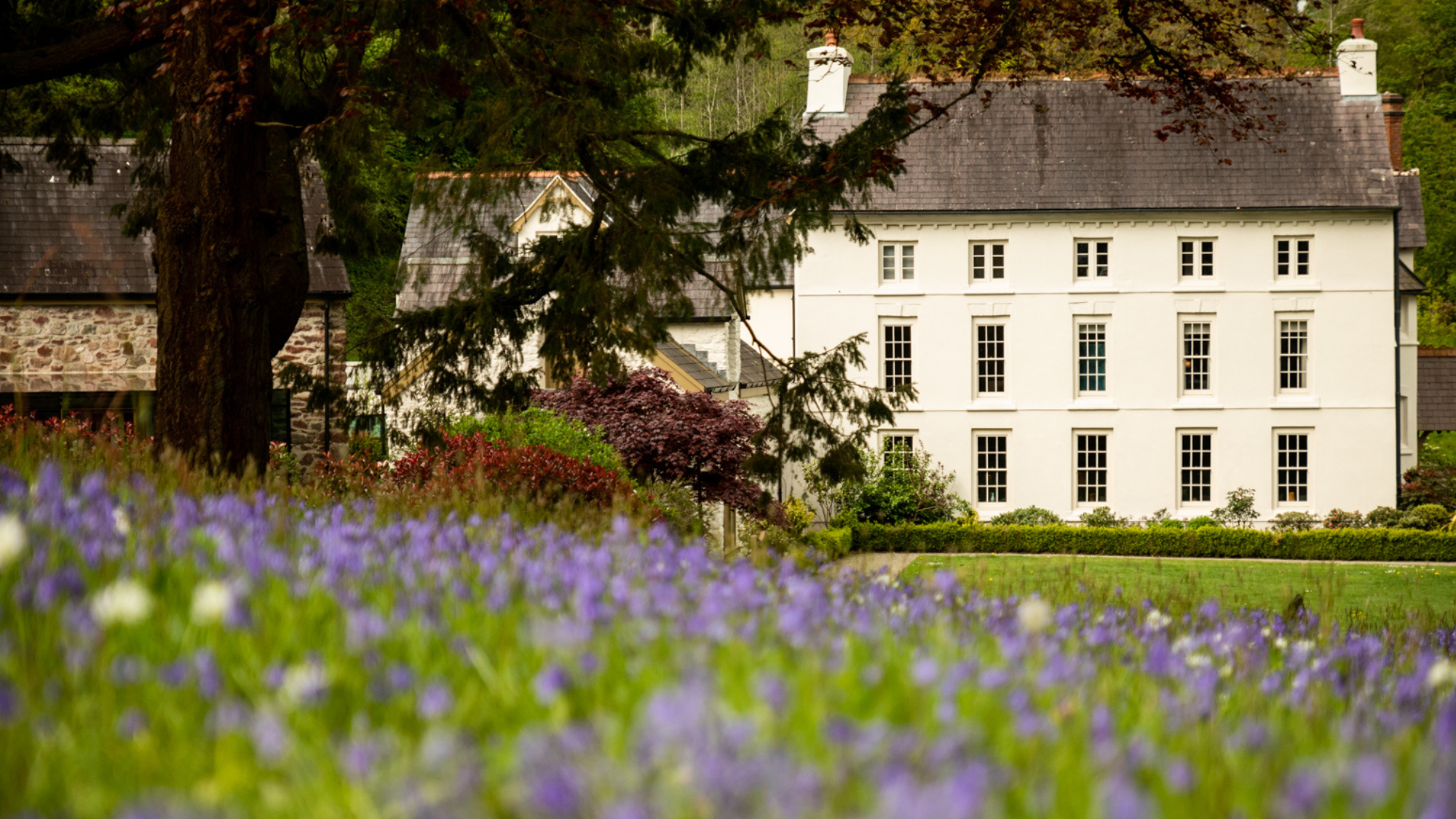 Grove of Narberth: comfort and style in the Welsh countryside
Grove of Narberth: comfort and style in the Welsh countrysideThe Week Recommends This boutique Georgian manor in Pembrokeshire is the perfect rural retreat
-
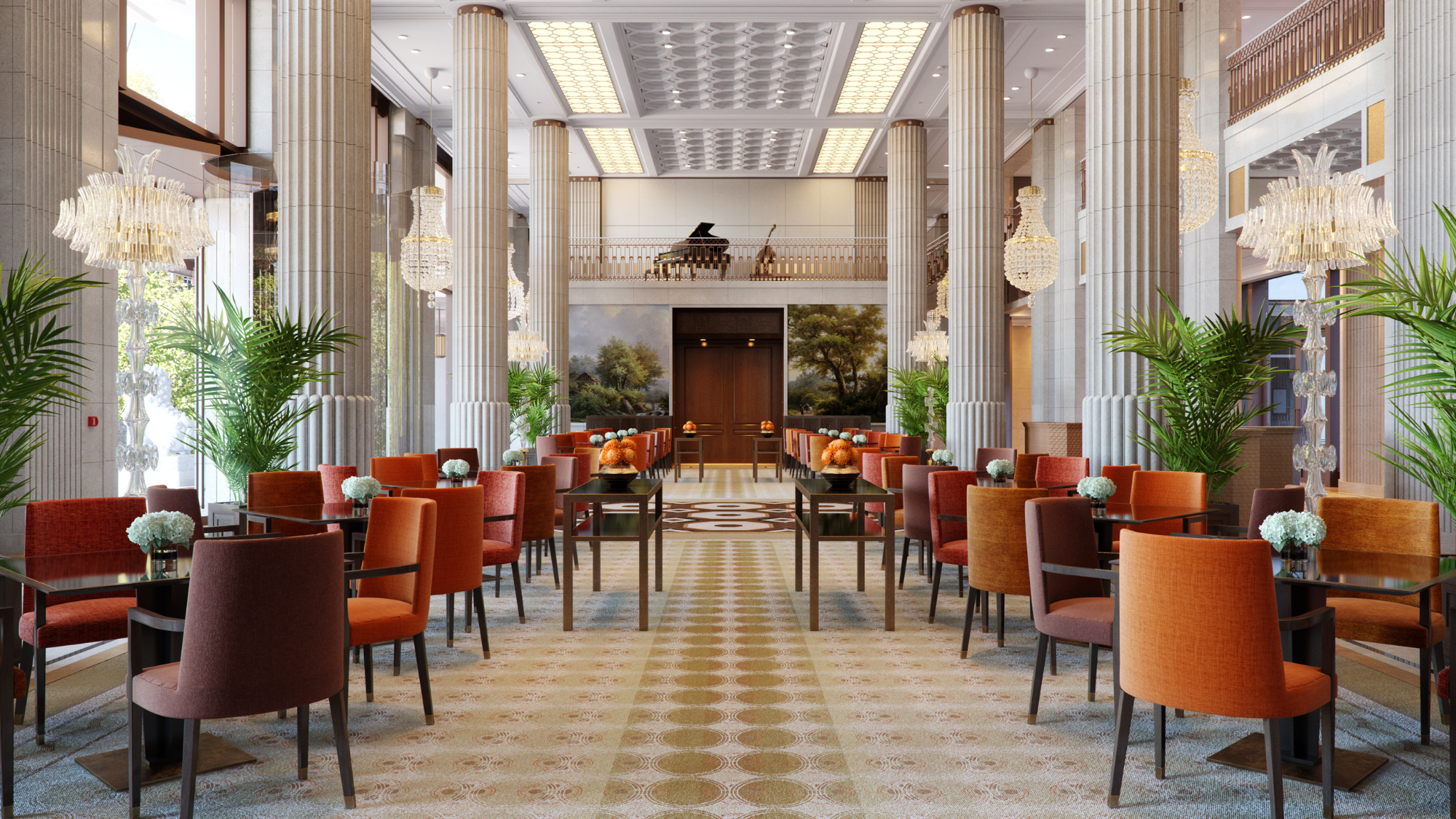 The Peninsula: London’s first billion-pound hotel
The Peninsula: London’s first billion-pound hotelThe Week Recommends As the capital’s super-luxury hotel scene continues to expand, the respected brand is still setting the standard
-
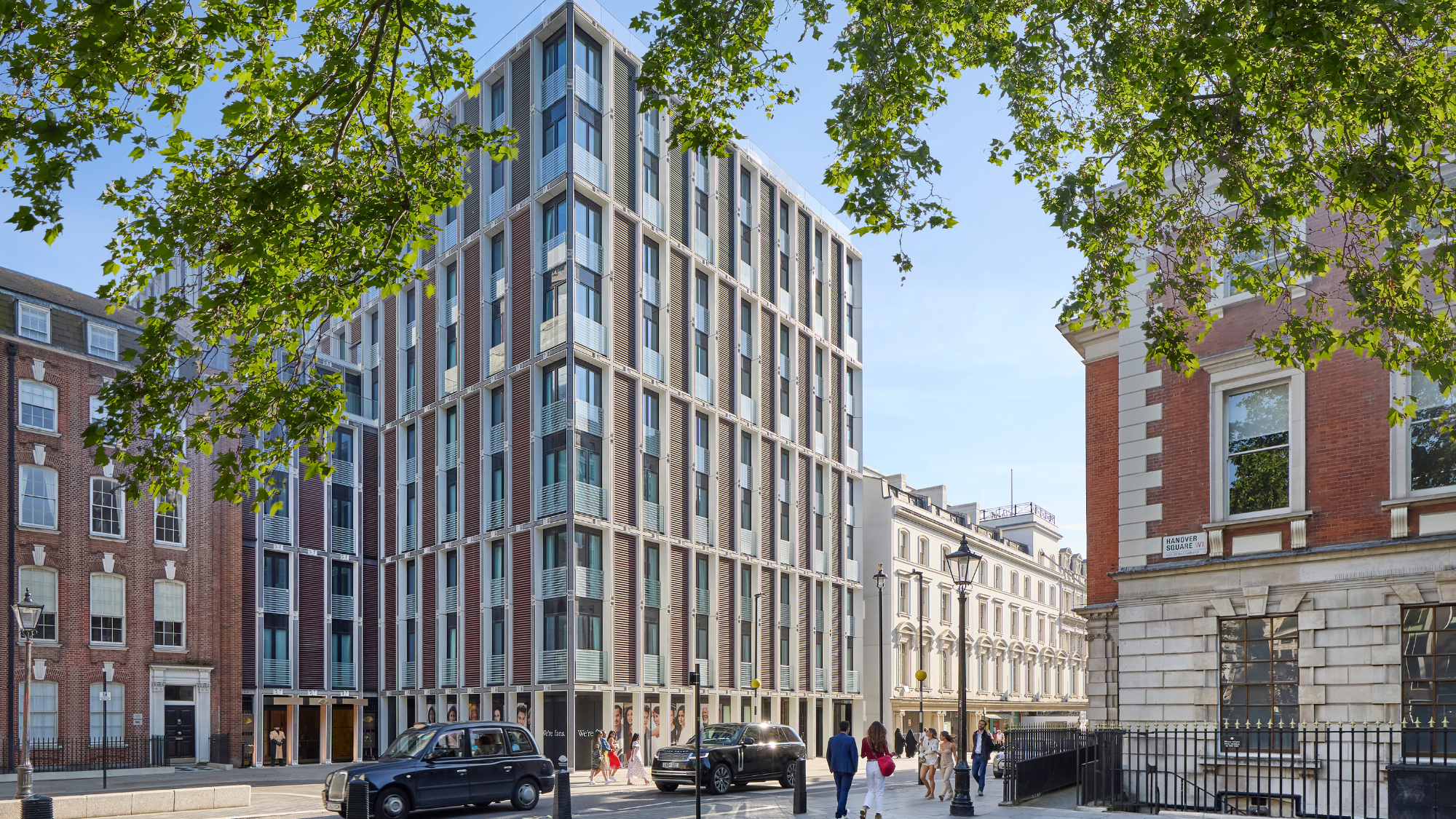 The Mini-Mayfair package at Mandarin Oriental
The Mini-Mayfair package at Mandarin OrientalThe Week Recommends Keep the kids entertained with a family-friendly stay at one of London’s swankiest hotels
-
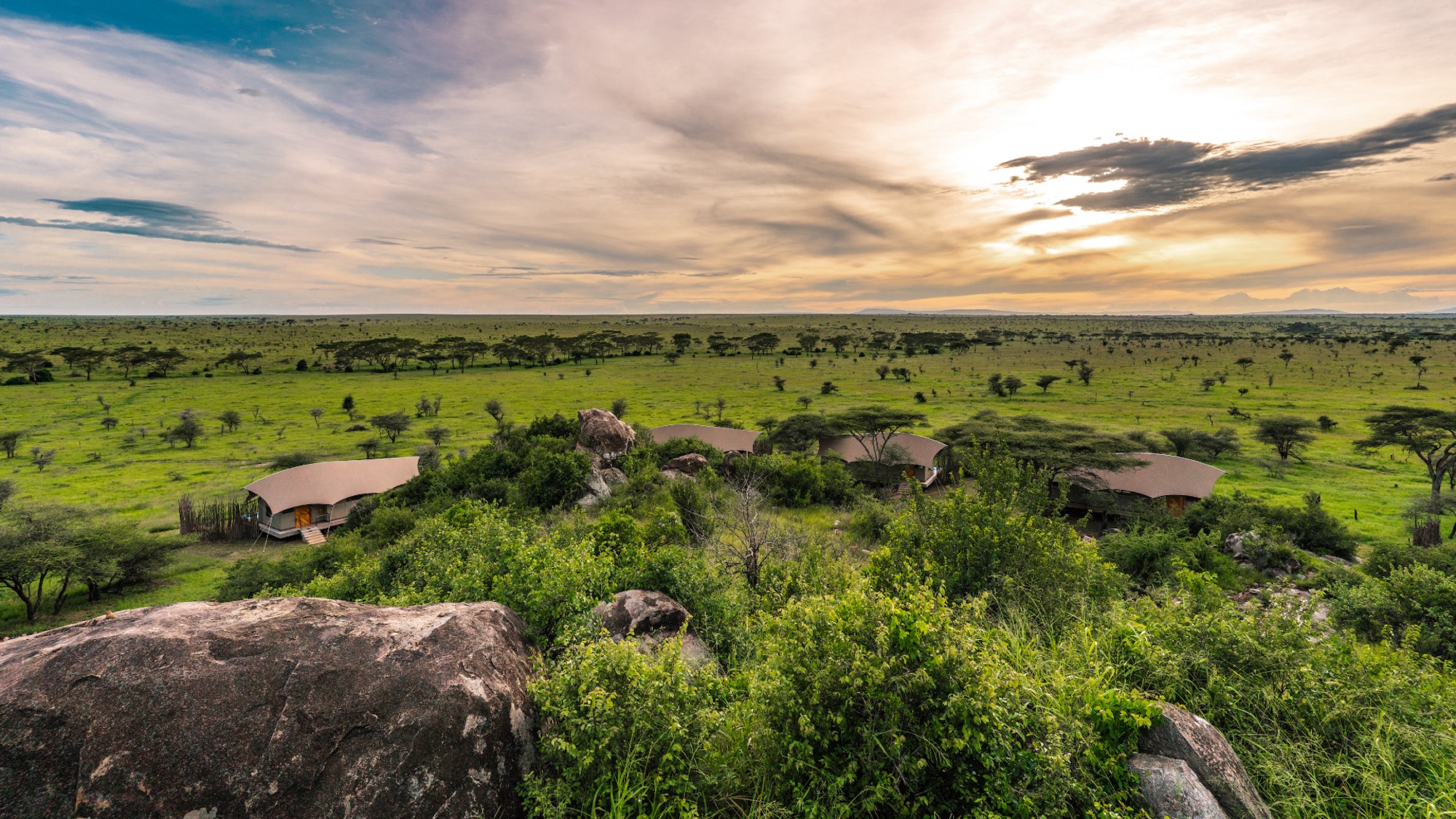 Experience Tanzania’s untamed wilderness from Lemala’s luxury lodges
Experience Tanzania’s untamed wilderness from Lemala’s luxury lodgesThe Week Recommends The vast protected landscapes are transformed into a verdant paradise during ‘emerald season’
-
 Grecotel Luxme Dama Dama: Greek luxury with a breezy beach vibe
Grecotel Luxme Dama Dama: Greek luxury with a breezy beach vibeThe Week Recommends Rhodes is reimagined in this refined and relaxed resort